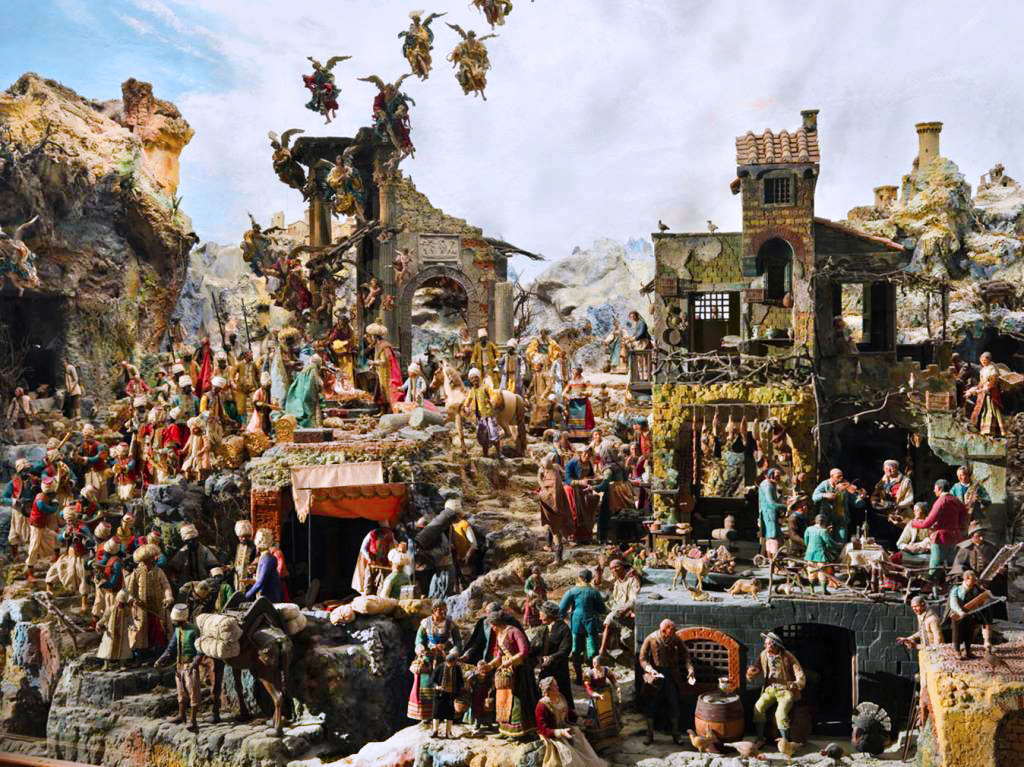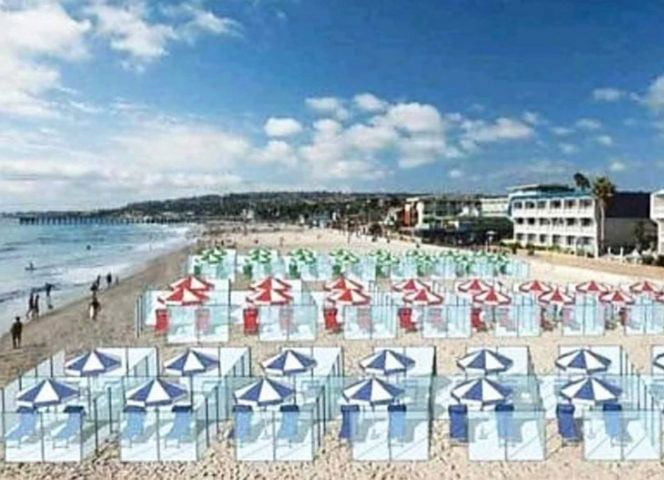the city where christmas never ends
While Christmas trees often decorate Italian piazzas in December, these displays are a relatively recent addition to the holiday season. For centuries, the most traditional Christmas decoration throughout the country has been the nativity scene and the best place to get everything you need to create one for your family is in Naples.
Located in the centro storico, the historic district of Napoli, a walk down the ‘Christmas Alley’ known as Via San Gregorio Armeno. It is a must when visiting the city. Shops along the pedestrian street have been producing nativity scenes since the second half of the 18th century. The bustling workshops are filled with, quite literally, thousands of presepe (the plural of presepio). These shops are open all year round, but in December, it is has an even more festive atmosphere, creating a unique type of Christmas market that can only be found in Naples.
While Neapolitans only refer to the street by its proper name, Via San Gregorio Armeno, it has earned its nickname from travelers who marvel at the hundreds of workshops that line the street. Window displays line each side of the street and it seems as though every square foot of space is devoted to ornamentation. No matter when you visit, it looks like Christmas, but in the weeks right before the holiday, Via San Gregorio Armeno is packed with Italian shoppers looking for the perfect addition to their nativity scene.
The tradition of the presepio dates back to the 13th century and St. Francis of Assisi, who in 1223, wanted to recreate a manger scene in a cave in the Umbrian hills. Today, no matter where you go in Italy during the holiday season, you will see nativity scenes, both large and small. They appear in shop windows and in homes throughout the country. You will see presepe in public squares and living nativity scenes are not uncommon outside the churches, with volunteers portraying each role, often with live animals surrounding the manger.
In Italy, every family has a presepio and starting on the Feast of the Immaculate Conception, families set it up inside their homes. However, Baby Jesus is never placed in the crib until Christmas Eve. This remains up until the Feast of the Epiphany on January 6th. In Naples, nativity scenes are taken very seriously. Many of the shops are owned and operated by artisans who passed the tradition down through generations. One of the most historic shops on the street is Ferrigno, which has been run by the same family for more than 150 years!
The nativity scenes from Naples are not just about Mary, Joseph and Baby Jesus. Rather than simple manger scenes that you might see elsewhere in the world, Italian ones are often very elaborate. They of course include the manger, but around it, an entire village may be built with fruit vendors, bakers, butchers and even a pizza maker next to his oven. A walk down the street will give you a glimpse of the possibilities when it comes to what you can add to your own Christmas decor.
what you can buy at christmas alley
You might buy shops, houses and fountains with running water for your creation. For backdrops, you can add mountains made from cork or tiny olive, lemon and orange trees all in bloom, to make memorable gardens with lighting to create the right atmosphere. There are wooden, terra cotta and ceramic figurines representing every profession imaginable, both modern and historic, as well as figurines made to look like modern sports heroes and politicians. Silvio Berlusconi has been a fixture for decades, while Donald Trump became perhaps the most popular non-Italian modern figure in recent years, taking the crown from Queen Elizabeth II. Beloved players on Naples’ soccer team are always available, as are popular musicians and entertainers. Along with every piece imaginable to build a custom presepio, you will also find plenty of Pulcinella figures in the form of ornaments, statues, paintings and keychains. Pulcinella is a puppet character that is typically depicted wearing a loose white outfit with a black mask. He was first introduced to the Commedia dell’Arte in 17th century and remains a symbol of Naples to this day.
The cost of a presepio will vary greatly depending on quality and size. Tiny accessories or minuzie, such as strings of sausages, piles of fruit and mounds of cheese, are incredibly detailed. You can choose and customize every detail for your village.
An Italian presepio typically grows each year, as more scenery and figurines are added. Some pieces start at just a few dollars, but a complete nativity scene with intricate figures could easily cost a few thousand dollars. Since such a presepio can be expensive, they are often built slowly over many years and in Italy are often handed down from one generation to the next. Even if visitors do not have a nativity scene at home, they will often bring home a Neapolitan figurine or two. It is an excellent way to remember your visit to Naples every time you celebrate the Christmas season.
Radar Reveals Roman City
In addition to the browsing and shopping opportunities along Via San Gregorio Armeno, there are also museums in Naples that have historic presepe in their permanent collections. The San Martino Charterhouse Museum (Certosa di San Martino) has an excellent exhibit. It contains what is believed to be the largest Neapolitan nativity scene, the Presepe Cuciniello, which contains figurines of 162 people, 80 animals, 28 angels and about 450 miniature objects. It is among the finest nativity scenes in the world. Others location in Naples include the Palazzo Reale and San Lorenzo Maggiore Museum, which have smaller, but equally exquisite displays.
In the world of the presepio, there is no place like Naples and in the Neapolitan tradition of craftsmanship, there is no place like the Christmas Street.





